On our recent trip to Karnataka’s cultural circuit , i.e., a trip to Badami, Pattadakal and Aihole, we spent a day in Badami. On that day we explored the different places to see in Badami in one day. Although, there are lots of places to see in Badami. But, we were visiting with kids. So, our’s was a relaxed trip. And we only included the highlights or the top places to see in Badami in our one day Badami trip itinerary. Nevertheless, today we bring you the list of places to visit in Badami. Including those which we visited. And those places to see in Badami that we had to skip because of slow travel that we opted for this time.
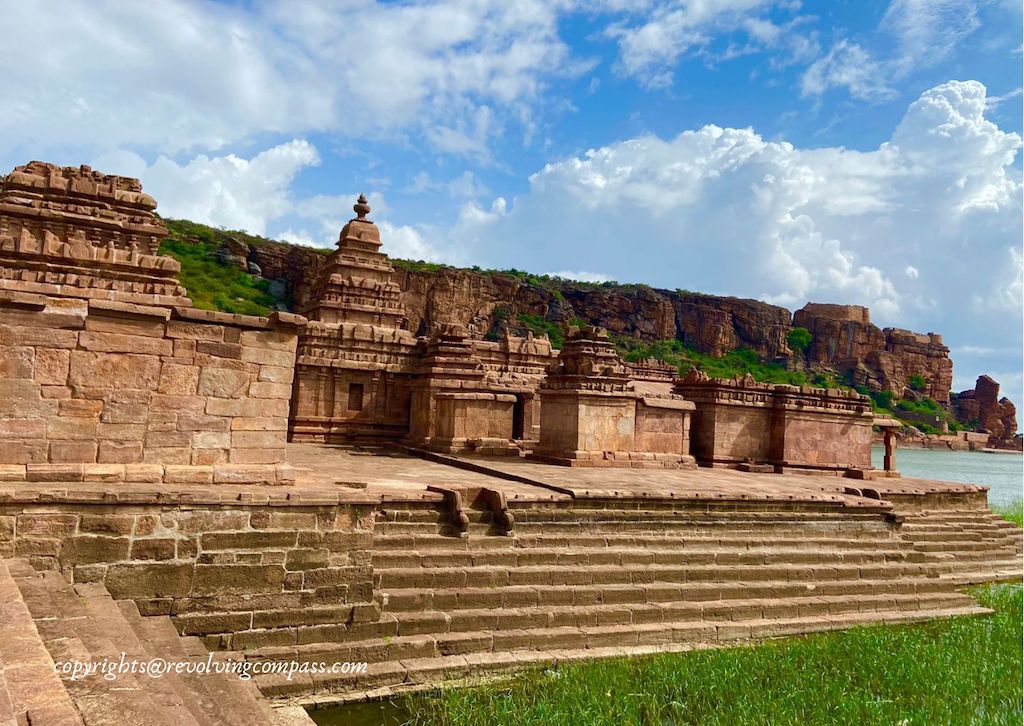
Table of Contents
Badami – an introduction
Located in the Bagalkot district of Karnataka and lying in the valley of the Malaprabha river, the town of Badami holds great cultural and historical significance in the history of Karnataka and India. Actually there are some inscriptions in Badami as old as the iron age – showing how ancient is the civilisation in this part of the country. Surrounded by the sandstone hills from all sides, this valley is naturally protected. And hence provided a very strategic location for human civilisation and ancient kingdoms to flourish.
Badami flourished as the capital during the rule of the Chalukya Dynasty. It is around this time that the Chalukya kings commissioned development of a lot of temples in this region. The temple art was practiced at Aihole. And small prototypes of temples practiced. As the artisans gained more expertise, they moved to Badami. And developed the impeccable cave temples of Badami. As well as the Bhootnatha group of temples – all of which are stunning to the core. Further they developed the Pattadakal Temple Complex. Which was the epitome of the temple architecture. In Pattadakal they developed temples in both Naggara (North Indian) and Dravidian (South Indian) form of architecture. In fact, some temples are even fusion of the two.
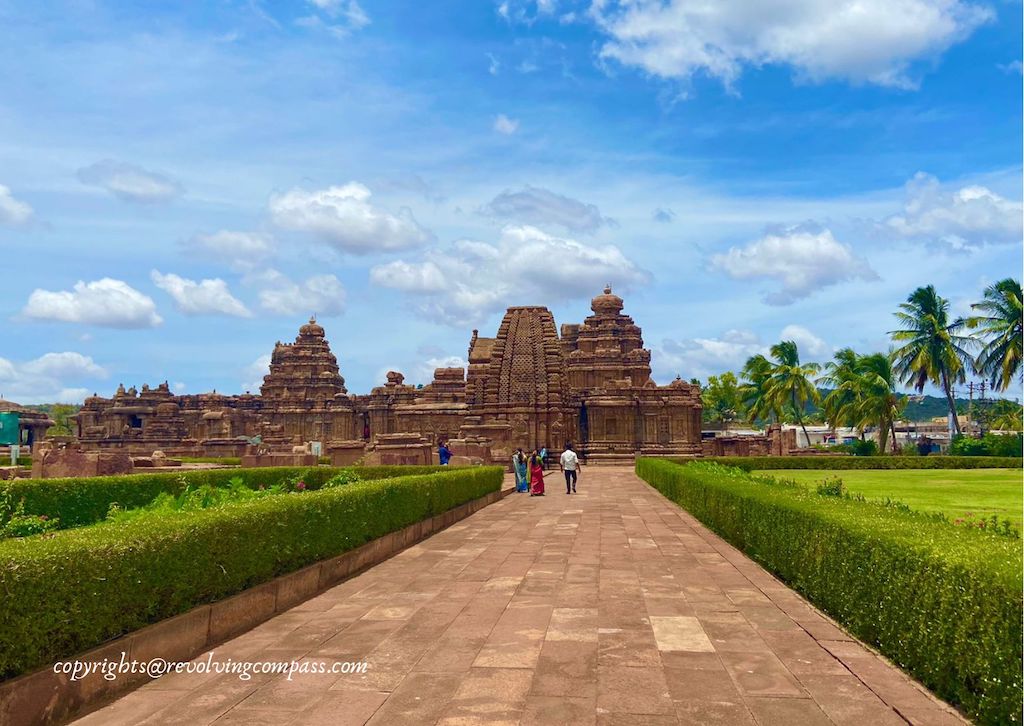
Badami kept flourishing as the administrative capital until the Vijayanagara Empire came into being. Post which Hampi became the administrative capital. But Badami still remained a very important cultural base of this region. The word “Badami” comes from the Hindi word “Badam” which means “Almond”. The color of the sandstone hills and the temples in Badami reflects the color of the Almond peel. And thats how the name of Badami.
Places to see in Badami in a day
There are many places to see in Badami and around the small town. Mostly they are ancient temples, some inscriptions, fort, and beautiful natural surroundings. So, without further delay, let’s take you through the places to see in Badami in a day.
Badami Cave Temples
Without doubt, the Cave Temples of Badami are the most famous of all the attractions in Badami. So, they were our first choice as well. Post breakfast, we headed to the Badami Cave temples. There is a small parking in front of the temples. So, we parked our vehicle here. However, there was crowd, and the parking was not very systematic. So, I suggest you take a local autorickshaw to the Badami Cave Temples. That will be much more convenient.
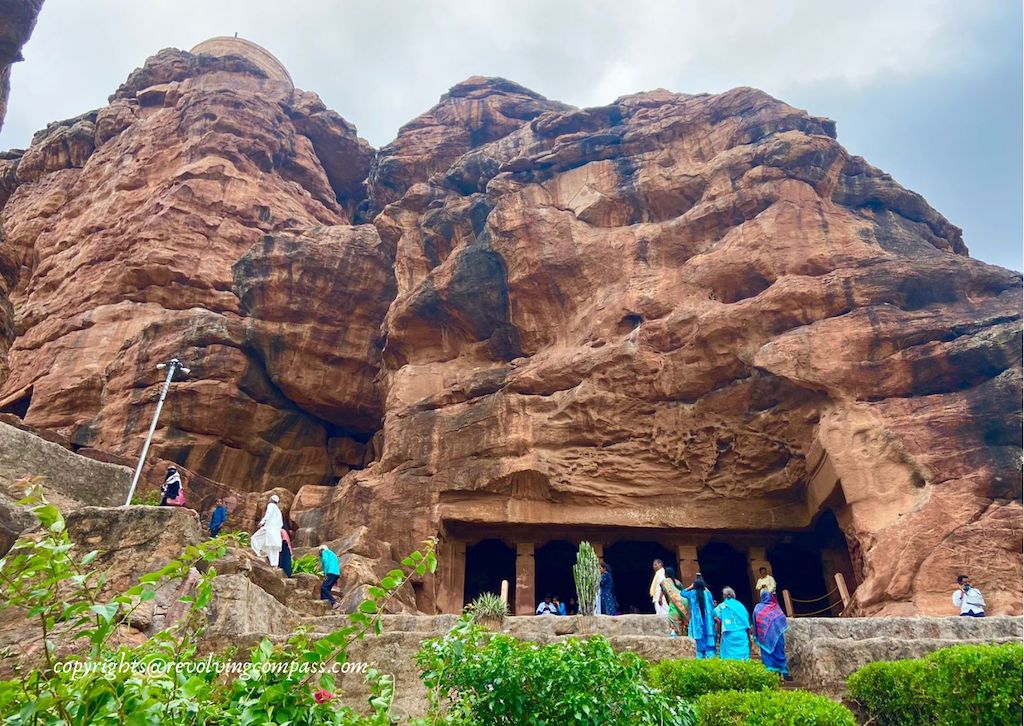
There are a total of 5 cave temples in Badami. 4 of which are located one after the other. While the 5th is located on a different side. These temples are carved into caves in the sandstone hills surrounding the whole region. And the temples were part of the majestic Badami Fort. Massive walls of Badami Fort can still be seen running all the way on the cliff of the hills on which the Badami Cave Temples are located. The caves temples are each dedicated to a different God –
5 Badami Cave Temples
- Cave 1 the Natraj Temple, dedicated to God Shiva
- The second Cave temple is the Vishnu Temple
- Cave 3 is the largest and is dedicated to a hybrid of Vaishnavism and Shaivism.
- Interestingly the fourth Cave Temple at Badami is dedicated to Jain Tirthankars.
- The fifth and the last cave temple is a little mystery that remains to be solved. For, it is a very small cave with a statue that some say looks like Buddha and others say looks like Vishu. So, it is still not established whom this cave was dedicated to.
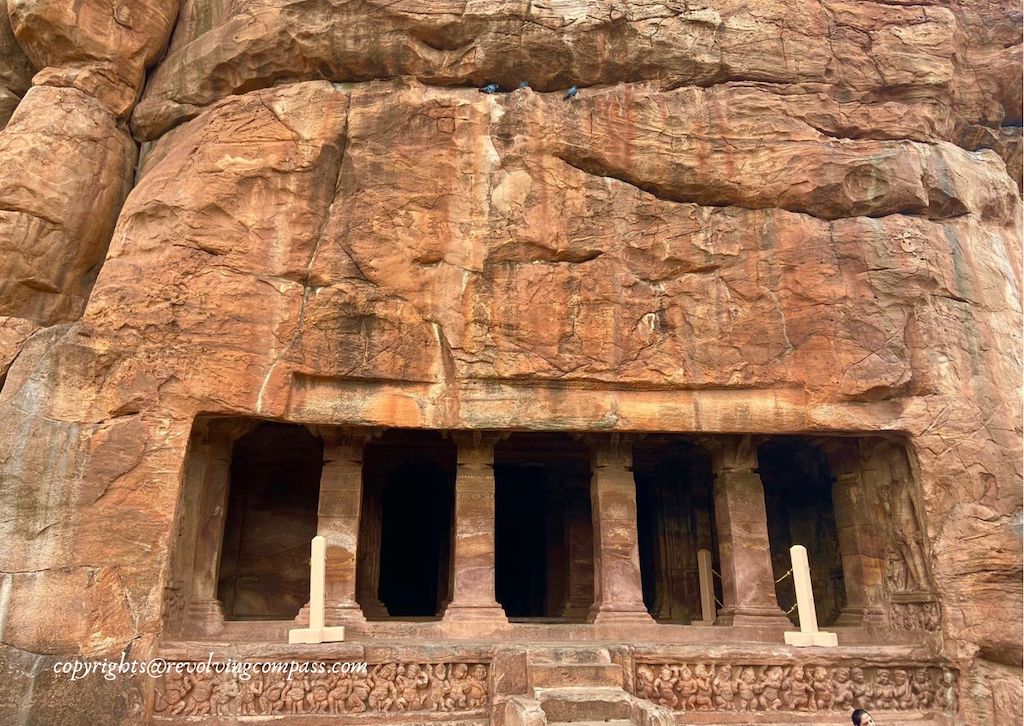
While the outer structure of these temples remain more or less the same, each temple has unique carvings of Gods. And could have been the inspiration for many other cave temples of India. Personally, they brought back strong memories of the Udayagiri Cave Temples from my Madhya Pradesh trip couple of years back. Is it possible that the Ajanta and Ellora Caves in Maharashtra could have drawn inspirations from here ?
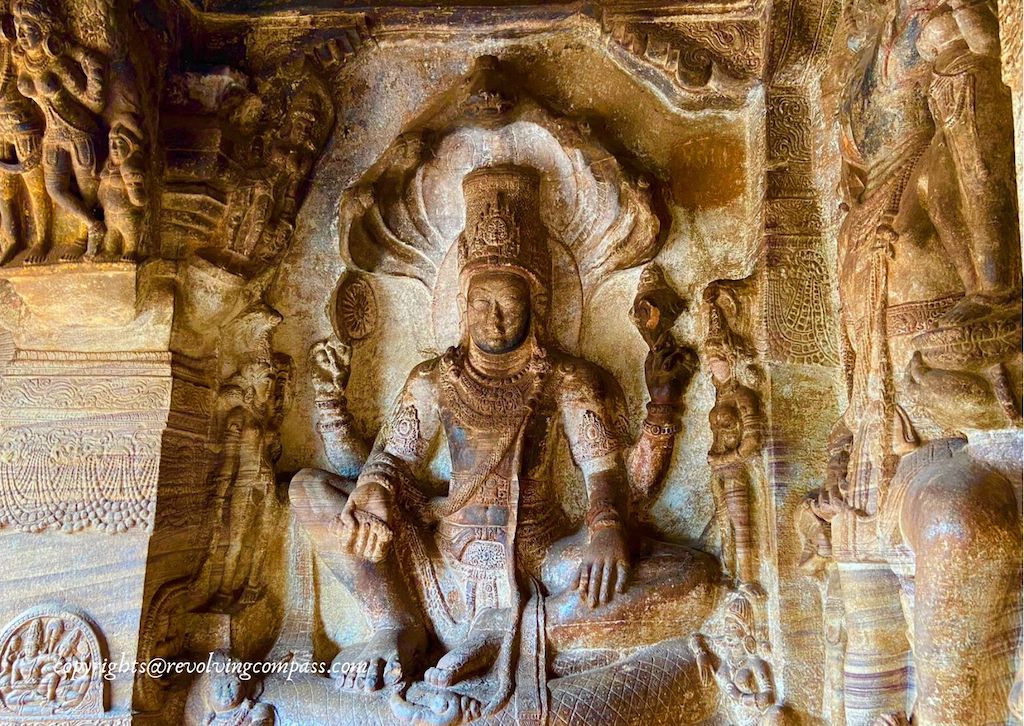
There are well defined steps cut out in the stones to climb the cave temples. And there are benches to sit and rest in front of each of the cave temples. Also, don’t forget to soak in the awesome views of the Agastya Lake and the Bhootnath Temples on the bank of the lake, as seen from the Badami Cave Temples. As you trek up, the scenes get better and better!!
Here’s my detailed post on the Badami Cave Temples
Lake Agastya
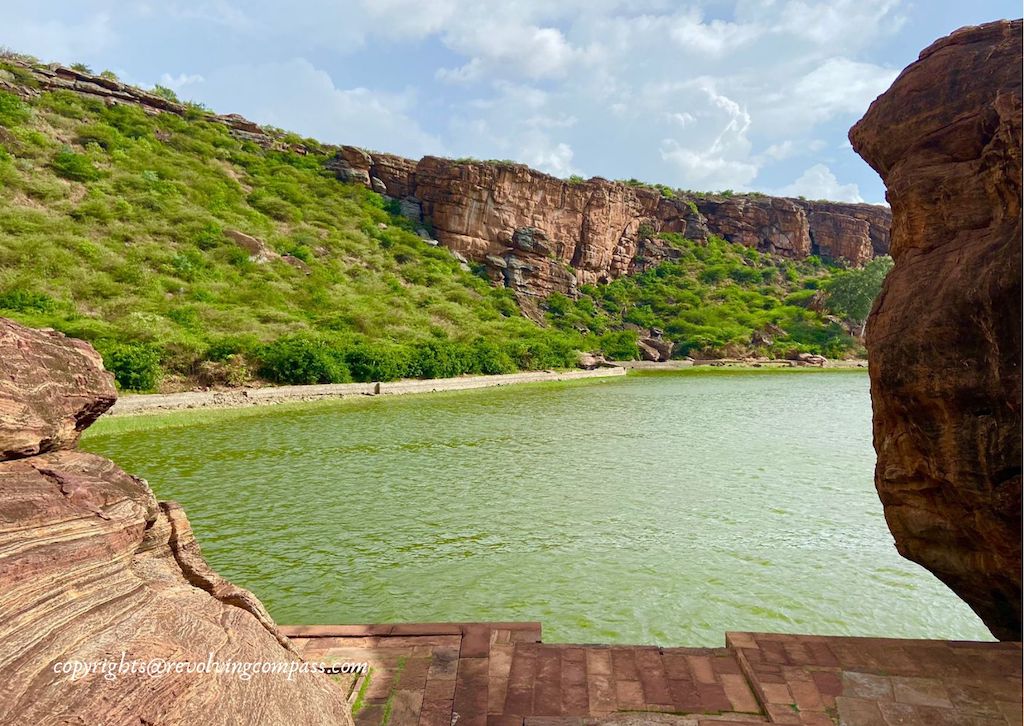
Right besides the Cave Temples lies the largest water reservoir of Badami – Lake Agastya. The lake was constructed in the 5th Century. It has several other temples along it’s banks apart from the Badami Cave Temples. And is considered a very holy lake. In fact, it’s water is believed to have healing properties. We visited Lake Agastya after exploring the cave temples. There are steps all around the lake. Where one can sit and spend some time in tranquility besides the lake. Sunset views across Lake Agastya are particularly famous.
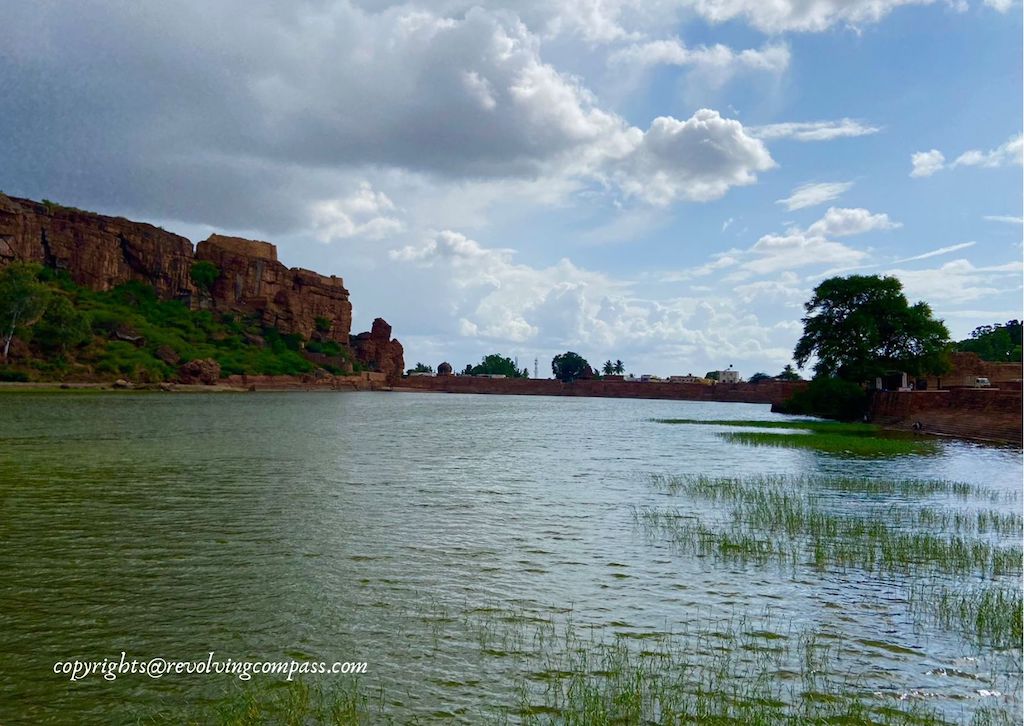
Bhootnatha Group of Temples
After visiting Lake Agastya, we first proceeded for lunch at the Clarks Inn Badami. And then took an autorickshaw to the Bhootnatha Group of Temples in Badami. There are two distinct set of temples – one located right on the bank of the Lake Agastya. And another group of temples located more inland. However, both are so beautiful. Walking along the sides of the lake, soaking in the views of the Badami Caves from across the lake, we reached the Bhoothnatha Group of Temples.
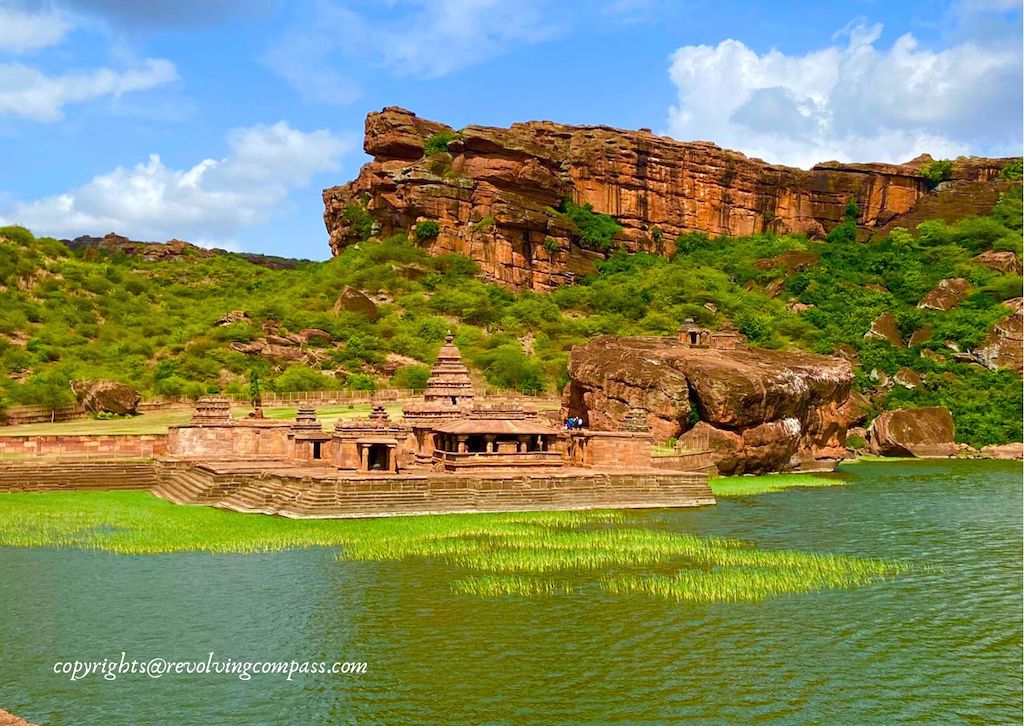
Apart from the main temple, there are several other smaller temples around. And some cave temples as well, with carvings of the different forms of Vishnu, Ganesha, Shiva, Durga and many other Gods.A path from in front of the carved stones leads all the way to the banks of Lake Agastya. We sat here for a very long time, enjoying the cool breeze and the beautiful views of hills surrounding the temple from all sides.
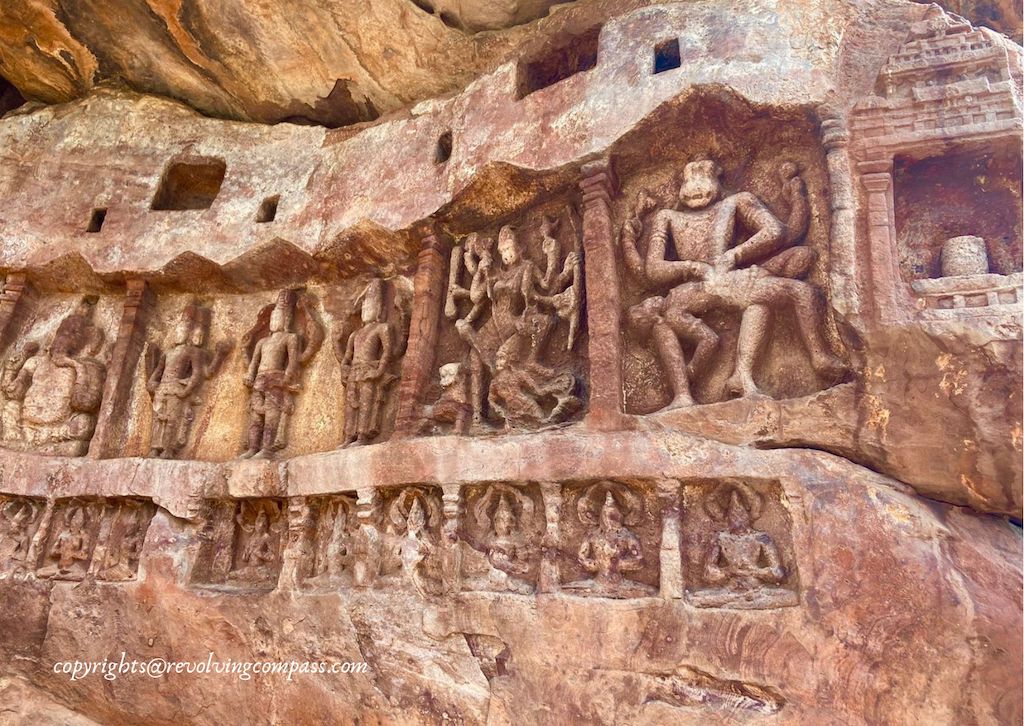
Archeological Museum of Badami
As we traced our steps back from the Bhoothnatha Temple we stopped briefly at the Archeological Museum of Badami. The Archeological Survey of India opened the Badami Museum in 1979. The museum contains different important sculptures, engraved and inscripted stones, idols of Gods carved on stones etc. that were formed in and around Badami. And have played a significant role in helping to reconstruct the history of this region. The artefacts in the Badami Museum date back from 6th to 16th century AD. The most attractive pieces in this museum include scenes and narrations in the form of sculptures from Bhagvath Gita, different forms of Shiva including Bhairavi, Lajja Gauri and Makar Toran.
Timings of the Archeological Museum of Badami : 10:00am to 5:00pm
Entry fee to the Archeological Museum of Badami: Rs. 25/- per adult. Kids below 12 years of age have free entry
Upper Shivalaya & Lower Shivayala
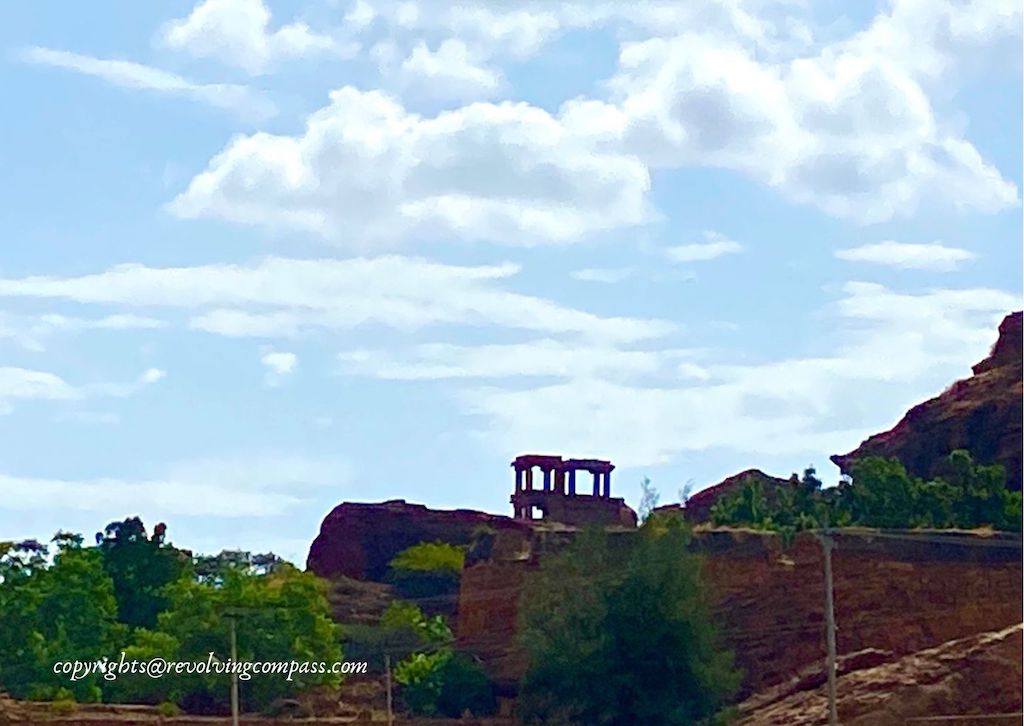
The Badami Shivalayas are Hindu Temples located on top of the northern hills in Badami, in region that was part of the Badami Fort long back. These were constructed between 6th to 8th century. While the upper Shivalaya is located to Lord Vishnu, the Lower Shivalaya are dedicated to Lord Shiva. And as the name suggests, the Lower Shivayala are located on the lower side while the Upper Shivalaya embrace the topmost peak of the northern hills. There is one more Shivalaya, called Mallegitti Sivalaya which is much better preserved. It is associated with Devi – sculptures. Scenes from Hindu epics like Mahabharatha and Ramayana can also be seen on the walls of these temples.
Apart from the temple visit, one can enjoy mesmerising 360 degree views all around, particularly from the Upper Shivalaya. Including bird’s eye view of the town of Badami, the Agastya Lake and Bhootnatha Group of temples, the Badami Caves on the opposite hill and far and wide. Trekking here in the evening is a popular activity.
Badami Fort
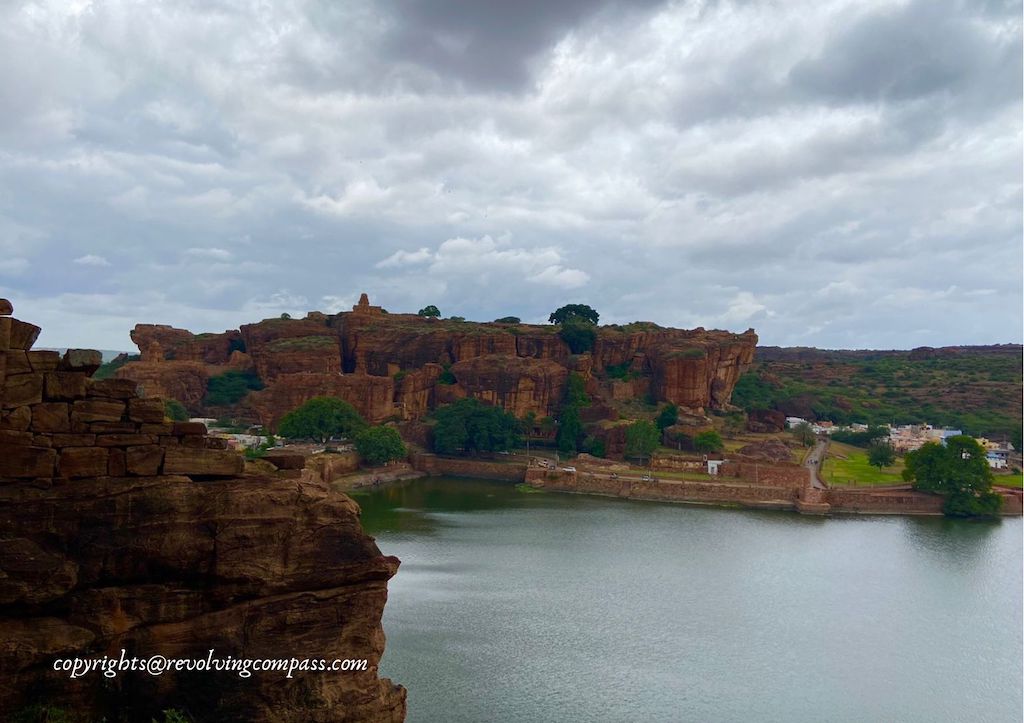
The Chalukyas built the Badami Fort. It was a massive fort of it’s time. As is evident from the double walls running on top of the sandsone hills all around Badami. Where ever you venture in Badami, I am sure you can see the walls of the fort from there. The Fort was strategically built to further add to the natural protection that the hills provided to this valley. Post the Chalukyas rule, the Badami Fort was captured by the Pallavas. And finally by Tipu Sultan. Who further strengthened the fort. The parts of the Badami Fort can be seen from across the Badami Cave Temples. And one can trek up there to see several important parts of the Badami Fort.
Banashankari Temple
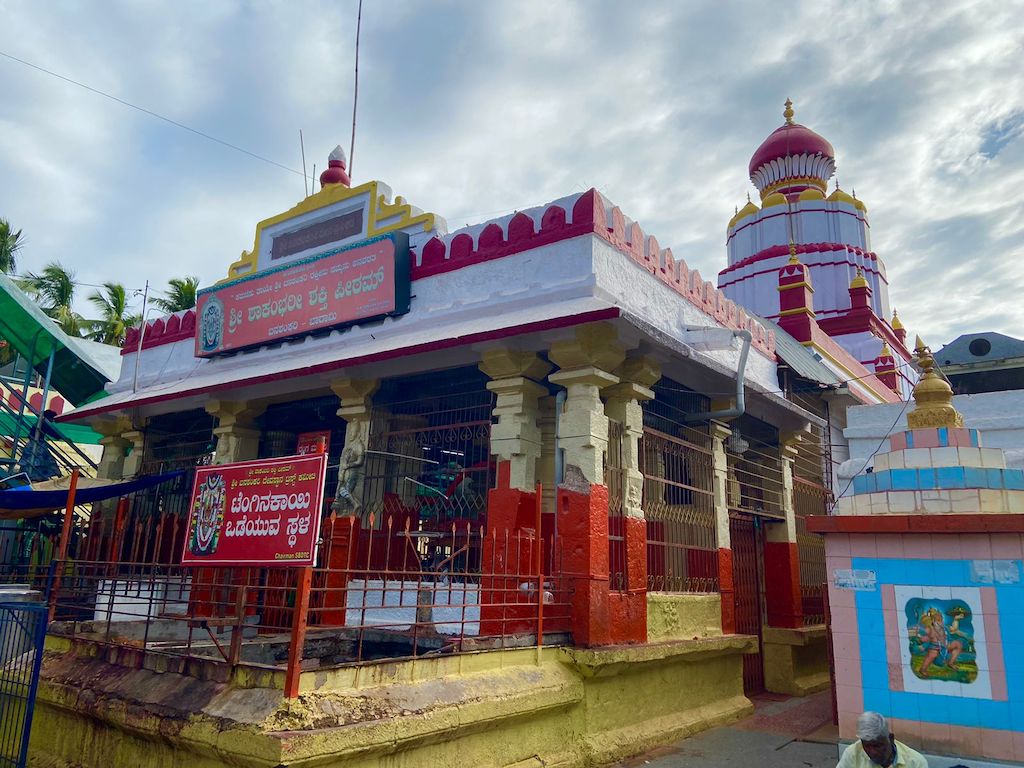
A relatively new temple, Banashankari Temple or Bandhankari Amma Temple in Badami is dedicated to Goddess Banashankari. She is believed to be a powerful Goddess and the one who showers her blessings on the whole region. She is also the “Kul Devi” or the main Deity of many families from North Karnataka as well as south Maharashtra. The temple is huge. And you can expect crowd here. There is a ticketing system to get the “Darshan” of the Devi once you enter inside. Which is customary to many other temples of South India including the Meenakshi Ammana Temple in Madurai and the Tirupati Temple. Friday is particularly significant day of the Banashankari Devi. And hence you can expect more crowd when visiting here on a Friday.
We actually didn’t visit here along with other places to see in Badami. But the day before in the evening while we were coming back to our hotel in Badami. After visiting the Pattadakal group of temples and the Durga Temple Complex at Aihole.
Other places to see in Badami
Apart from the above, there are several temples located within 3-5km of the main town of Badami. If you have time, you can include them as well in your group of places to see in Badami. Some of these include :
- Mahakuta Temple
- Sangameshwara Temple
- Uma Maheshwari Temple
Apart from visiting the temples and the historical sites, Badami has a lot to offer to the adventurous souls. Couple of these things to do in Badami include rock climbing and trekking.
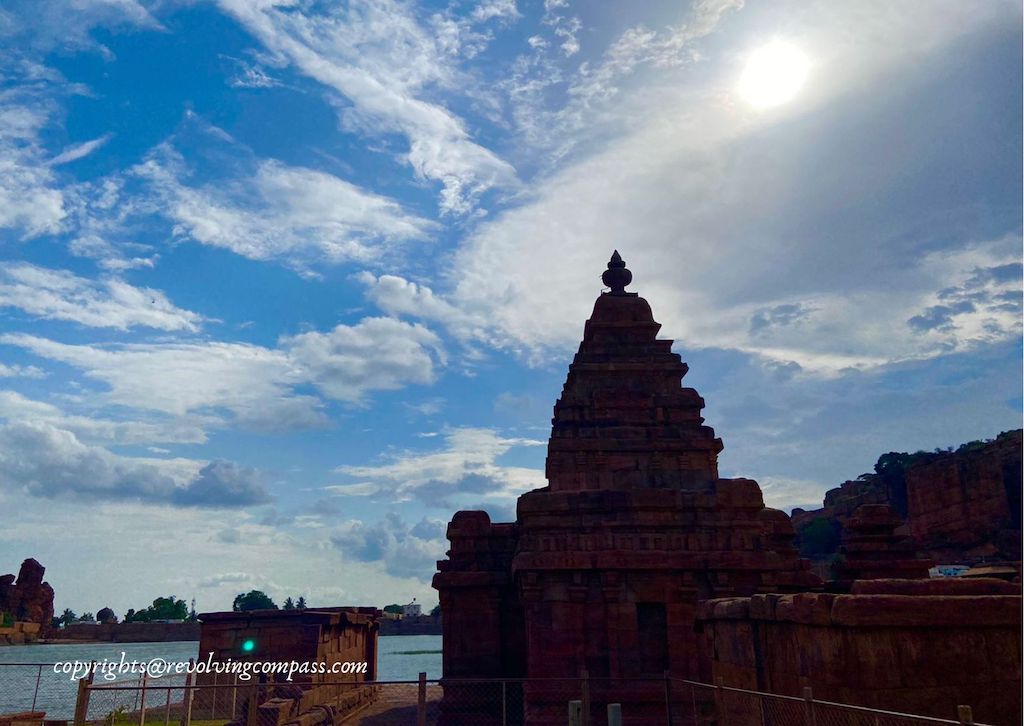
General information for planning a trip to Badami
Here’s our complete guide to visit Badami, along with our 4 days Badami trip itinerary. There are organised day trips to Badami from Goa and Hampi. Both of which are located at around 2.5-3 hours drive from Badami. However, spending just a single day in Badami can in no way be sufficient. Also, when one visits Badami, one shouldn’t leave visiting the UNESCO world heritage site at the Pattadakal temple complex. And the cradle of temple architecture in India at Aihole. There is no other place in India like these two. And to be honest, I really enjoyed the slow paced travel around these three places over the course of 4 days that we stayed in Badami. So, I personally highly recommend spending 3-4 days in Badami and around.
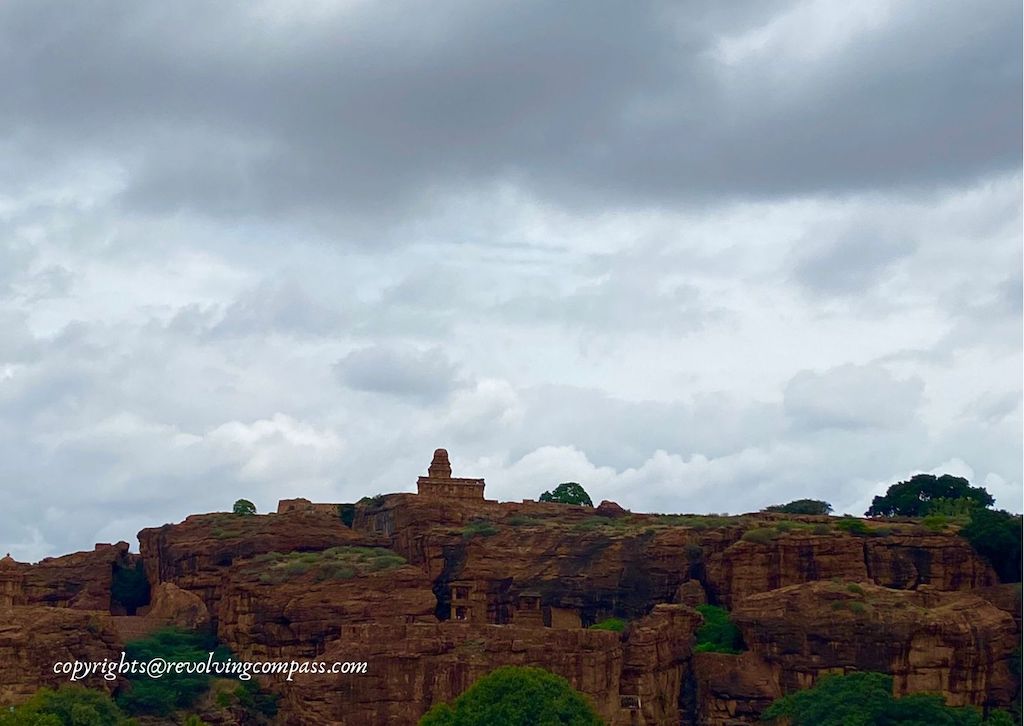
Some quick tips to plan a trip to Badami
- You can commute to Badami in a bus, taxi or self drive
- Badami is well connected through rail network as well. Overnight trains from Bangalore to Badami are a convenient way to reach Badami and save travel time as well.
- If you are visiting the heritage sites of Hampi, then you can as well visit Badami along with it
- Also, if you are visiting Goa, you can halt at Badami on the way.We have several posts on our multiple trips to Goa. Read our Goa content here.
- Winters are considered best season to visit Badami, but right around the onset of monsoons are also a good time. We visited Badami in the beginning of July. There were hardly any showers and to was overcast most of the times. With cold and pleasant winds. Summers are very hot.So, avoid summer season.
- Wear comfortable cloths. Good to cover your shoulders and knees when visiting the temples. Although active worshipping is not done in most of these temples. But still it is a good gesture to show your respect.
- You can stay in Badami at Heritage Resort Badami – we had a comfortable stay here. Or, you can stay at Clarks Inn Badami which is located at walkable distance from the cave temples. Food options were more elaborate at Clarks Inn Badami.
- For local commute, best is to hire a local autorickshaw or taxi.
- There is a lot of walking and steps to be climbed around the temples. So, keep that in mind when planning a trip to Badami with kids and elderly.
- While site seeing in Badami you can stop for lunch at Clarks Inn Hotel which is located right in the center of the main market.
More resources from our trip to Badami
Our day exploring the Pattadakal Group of Temples
Visiting the cradle of temple architecture at Aihole
A complete guide to visit Badami, Pattadakal and Aihole